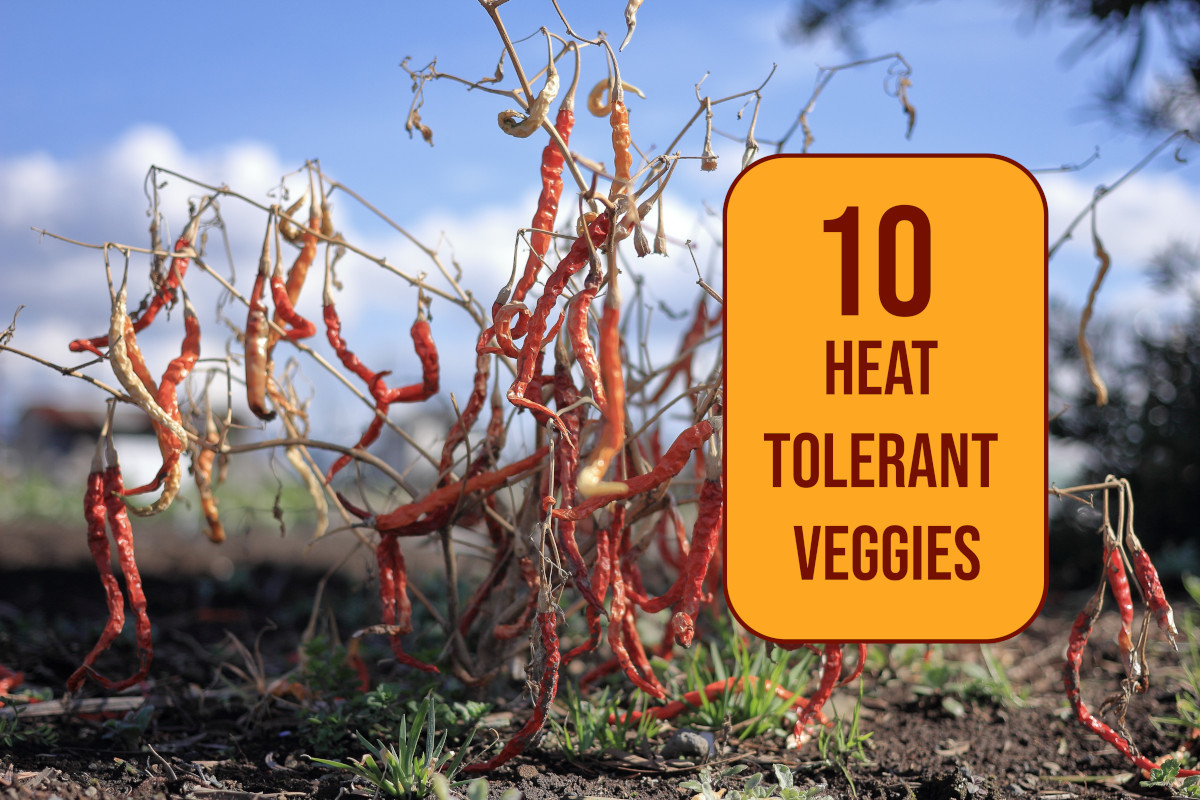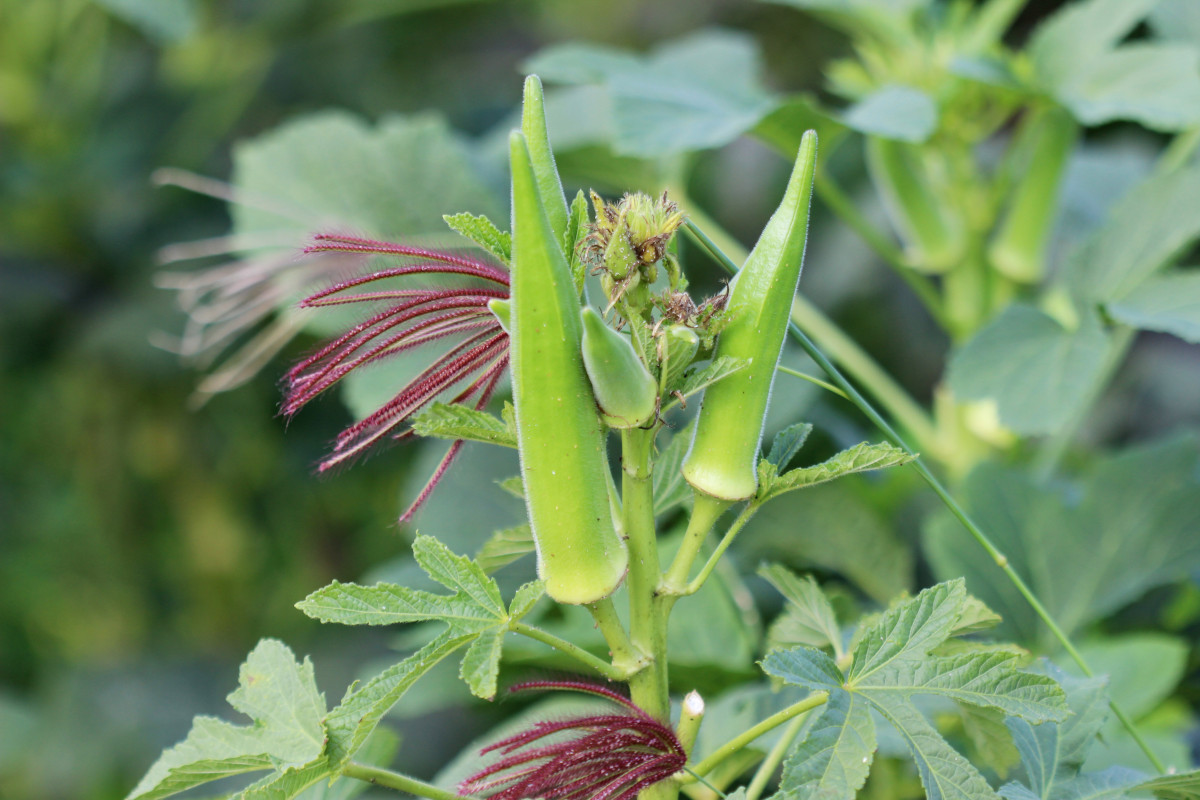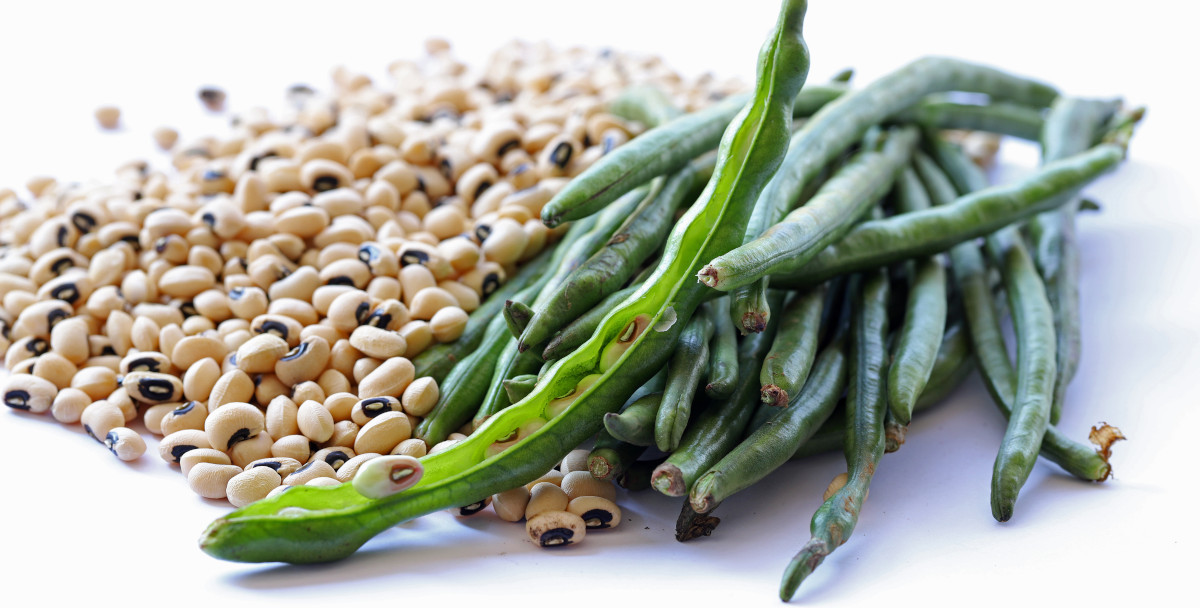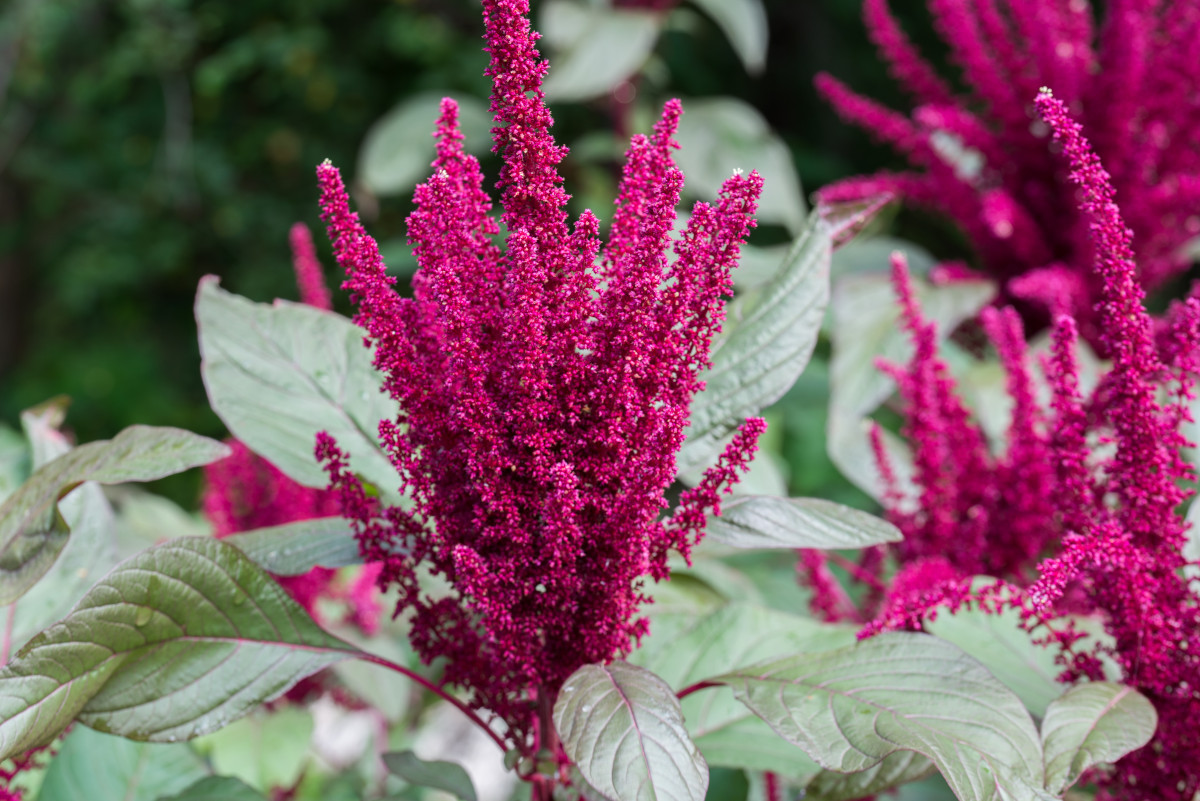10 Heat Tolerant Vegetables For Hotter Summers

Gardening enthusiasts and vegetable cultivators often face the challenge of growing healthy crops in regions with sweltering heat and scorching summers. The soaring temperatures and arid conditions can take a toll on many plants, causing them to wither and falter. However, with careful selection and the right approach, it's possible to create a thriving vegetable garden even in the midst of intense heat.
In this article, we delve into the world of heat-tolerant vegetable garden plants – a collection of resilient and adaptable varieties that can withstand the toughest of heatwaves. These remarkable vegetables not only endure high temperatures but also continue to flourish, producing abundant yields for your culinary delights.
As we explore the top 10 heat-tolerant vegetable garden plants, we'll uncover their unique characteristics, growth requirements, and the best practices for nurturing them in hot climates. Whether you reside in a sun-baked desert or an area with hot and humid summers, these resilient vegetables will be your allies in achieving a successful harvest.
Embrace the opportunity to diversify your garden with these heat-tolerant champions and experience the joy of reaping the rewards, even when the mercury soars. Let's dig into the details and unearth the secrets of cultivating a remarkable vegetable garden that can withstand the heat of nature's fiery embrace.
If you've missed the boat for growing this year why not add them to your VegPlotter garden plan for next year to make sure you can take full advantage of these heat tolerant plants next season.
- Okra
- EggPlant (Aubergine)
- Cowpeas
- Sweet Potatoes
- Chili Peppers
- Cucumbers
- Malabar Spinach
- Thai Basil
- Yardlong Beans
- Amaranth
Plant 1: Okra (Abelmoschus esculentus)
Okra, also known as "lady's finger," is a heat-loving vegetable that thrives in hot and dry conditions. With its origins in tropical and subtropical regions, this resilient plant has adapted to high temperatures and is a popular choice for gardens in hot climates.

The okra plant boasts tall stems with vibrant green, finger-like pods that are not only delicious but also packed with essential nutrients. Its heat-tolerant qualities make it an excellent addition to any summer garden, where other plants may struggle to survive.
To cultivate okra successfully, choose a sunny spot in your garden with well-drained soil. This heat-loving plant requires warm soil for germination, so ensure it gets enough sunlight to thrive.
Plant 2: Eggplant (Solanum melongena)
Eggplant, also known as "aubergine," is another heat-tolerant vegetable that flourishes in warm temperatures. Native to the subtropical regions of Asia, this versatile plant has become a staple in various cuisines worldwide, loved for its unique texture and flavor.
The eggplant plant features lush foliage and glossy, elongated fruits in different shapes and sizes, ranging from deep purple to light green. While it thrives in warm weather, it's essential to protect it from strong winds and intense sunlight, which can cause damage to the delicate leaves and fruits.
To grow eggplant successfully, select a sunny location in your garden that receives ample sunlight throughout the day. Adequate air circulation is crucial for its well-being, so avoid overcrowding other plants nearby. Proper watering is essential, as the eggplant prefers consistently moist soil, but take care not to overwater, as soggy conditions can lead to root rot.
With a little care and attention, you can enjoy a bountiful harvest of delicious eggplants, perfect for grilling, roasting, or adding to your favorite culinary creations.
Plant 3: Cowpeas (Vigna unguiculata)
Cowpeas, also known as black-eyed peas, are an excellent addition to any heat-tolerant vegetable garden. Originating from Africa, these legumes have adapted to thrive in hot and arid conditions, making them ideal for regions with scorching summers.

The cowpea plant is not only heat-tolerant but also drought-resistant, making it a hardy and low-maintenance choice for gardeners in hot climates. Its fast growth and ability to fix nitrogen in the soil also contribute to its popularity as a cover crop and green manure.
Cowpeas produce attractive flowers and develop elongated pods filled with delicious peas. They come in various cultivars, ranging from cream-colored to black-eyed varieties, offering both culinary diversity and ornamental appeal.
To cultivate cowpeas successfully, choose a well-drained planting site with full sun exposure. These legumes can thrive in poor soil conditions, but they perform best with a little added compost or organic matter. Once established, they require minimal watering, making them a sustainable and heat-resistant addition to your vegetable garden.
Embrace the benefits of cowpeas in your garden, where they will not only enrich the soil but also grace your table with a delightful and nutritious harvest.
Plant 4: Sweet Potatoes (Ipomoea batatas)
Sweet potatoes, beloved for their delectable taste and nutritional richness, are among the most heat-tolerant vegetables you can grow in your garden. Originating from the tropical regions of Central and South America, these starchy tubers have adapted to thrive in warm climates with long, hot summers.
The sweet potato plant features sprawling vines with heart-shaped leaves that spread vigorously across the garden. It is a versatile crop, adding both ornamental value and an abundant harvest of nutritious sweet potatoes to your garden.
For successful sweet potato cultivation, choose a sunny spot with loose, well-drained soil. As the sweet potato is a tropical plant, it craves warmth, so ensure it receives ample sunlight throughout the day. Be patient during the growing season, as sweet potatoes take time to develop, and require at least 100 days of warm weather to reach maturity.
One of the great benefits of sweet potatoes is their drought tolerance. While they do need regular watering during the initial stages of growth, be cautious not to overwater, as they are susceptible to root rot in waterlogged conditions.
With their versatility in the kitchen and adaptability to hot climates, sweet potatoes are a must-have addition to any heat-tolerant vegetable garden. Delight in the journey of growing these vibrant tubers, and savor the sweet rewards of your labor at harvest time.
Plant 5: Chili Peppers (Capsicum spp.)
Chili peppers are fiery and heat-loving vegetables that thrive in warm climates, making them an excellent addition to any heat-tolerant vegetable garden. Originating from the Americas, these spicy delights have been embraced by various cuisines worldwide, adding a burst of flavor and heat to countless dishes.
The chili pepper plant typically features small, elongated fruits that come in various shapes, sizes, and levels of spiciness. From mild to eye-wateringly hot, there's a chili pepper variety to suit every taste preference.
To cultivate chili peppers successfully, choose a sunny location in your garden with well-drained soil. These plants are highly sensitive to cold temperatures, so make sure to plant them after any threat of frost has passed.
Chili peppers require consistent watering, especially during the fruiting stage. However, be cautious not to overwater, as excessive moisture can lead to fungal diseases. Mulching around the plants can help retain soil moisture and prevent weed growth.
Whether you enjoy a subtle kick or crave the intense heat, growing chili peppers in your garden will add spice and excitement to your culinary adventures. Explore the diverse array of chili pepper varieties available and elevate your dishes with their bold flavors and sizzling heat.
Plant 6: Cucumbers (Cucumis sativus)
Cucumbers are refreshing and heat-tolerant vegetables, making them an excellent choice for your summer garden. Believed to have originated in South Asia, cucumbers have spread worldwide due to their delicious flavor and hydrating properties.
The cucumber plant is known for its trailing vines and bright green, elongated fruits with a high water content. They come in various varieties, including slicing cucumbers for salads and pickling cucumbers for preserving.
To grow cucumbers successfully, choose a sunny location in your garden with fertile, well-drained soil. These heat-loving plants need warmth to thrive, so ensure they receive plenty of sunlight throughout the day.
Consistent watering is essential for cucumber plants, especially during flowering and fruiting. However, be cautious not to overwater, as overly damp conditions can lead to issues like mildew. Mulching around the plants can help retain soil moisture and prevent weed growth.
Supporting the cucumber vines with trellises or stakes will keep the fruits off the ground, promoting better air circulation and preventing rot. Regularly harvesting the ripe cucumbers will encourage more fruit production and maintain the plant's vigor.
Enjoy the crisp and refreshing taste of homegrown cucumbers in your salads, sandwiches, and snacks. With a little care and attention, these versatile vegetables will thrive in the summer heat and provide you with a bountiful harvest all season long.
Plant 7: Malabar Spinach (Basella alba)
Malabar Spinach is a heat-tolerant vegetable that thrives in hot and humid conditions, making it a perfect choice for regions with sweltering summers. Originating from tropical Asia, this leafy green is known for its vibrant appearance and numerous health benefits.
The Malabar Spinach plant features succulent, heart-shaped leaves with deep green or red stems. Unlike traditional spinach, it is not botanically related but serves as an excellent substitute in warm climates where regular spinach struggles to grow.
To grow Malabar Spinach successfully, choose a location with partial shade in your garden. While it can tolerate full sun, providing some shade during the hottest part of the day will prevent the leaves from wilting. Ensure the soil is well-draining and rich in organic matter. Regular watering is essential, especially during dry spells, to keep the plant hydrated and maintain its lush foliage.
The Malabar Spinach plant is a climbing vine and will require support as it grows. Provide trellises or vertical structures for the vines to climb, allowing for better air circulation and more accessible harvesting.
Harvest the young, tender leaves of Malabar Spinach to add a mild and slightly tangy flavor to your salads, stir-fries, and soups. The leaves can be used both raw and cooked, offering versatility in various culinary creations.
Enjoy the nutritional benefits of Malabar Spinach, which is rich in vitamins A and C, iron, and calcium. Embrace this tropical green's resilience and unique taste, as it thrives in the heat and brings a delightful touch to your dishes.
Plant 8: Thai Basil (Ocimum basilicum var. thyrsiflora)
Thai Basil, also known as "horapa" or "bai krapao," is a flavorful and heat-tolerant herb originating from Southeast Asia. Unlike traditional sweet basil, Thai Basil boasts a unique anise-like flavor with hints of spice, making it a favorite in Thai, Vietnamese, and other Asian cuisines.
Thai Basil plants feature lush green leaves with purple stems and are often grown as compact, bushy plants. They thrive in hot climates and are known for their ability to withstand high temperatures.
To grow Thai Basil successfully, provide a sunny location with well-draining soil. Regular watering is essential, especially during dry spells, to keep the plant hydrated and promote healthy growth.
Harvest the aromatic leaves regularly to encourage new growth and enjoy their distinct flavor in a variety of dishes, including stir-fries, curries, soups, and salads.
With its resilience and delectable taste, Thai Basil adds an exotic touch to your culinary endeavors, enhancing the flavors of your favorite Asian-inspired meals. Embrace this heat-tolerant herb in your garden and elevate your dishes with its distinctive and vibrant essence.
Plant 9: Yardlong Beans (Vigna unguiculata subsp. sesquipedalis)
Yardlong beans, also known as asparagus beans or snake beans, are a remarkable and heat-tolerant vegetable. Originating from Southeast Asia, these slender and elongated beans thrive in hot and humid climates, making them an ideal addition to your heat-tolerant vegetable garden.
The yardlong bean plant features long, thin pods that can grow up to a yard in length, hence their name. These beans are typically enjoyed when young and tender, as they can become fibrous and less palatable as they mature.
To grow yardlong beans successfully, choose a sunny location in your garden with well-drained soil. These fast-growing vines require ample sunlight to produce a bountiful harvest of delicious beans.
Consistent watering is crucial for yardlong beans, especially during flowering and pod formation. Be sure to keep the soil consistently moist, as dry conditions can lead to poor bean development.
Harvest the yardlong beans regularly when they reach their desired length, usually between 12 to 18 inches, depending on your culinary preferences. They are delicious when stir-fried, sautéed, or used in a variety of Asian-inspired dishes.
Embrace the unique and tropical allure of yardlong beans as they thrive in the summer heat, providing you with a delightful and exotic addition to your garden and dining table.
Plant 10: Amaranth (Amaranthus spp.)
Amaranth is a versatile and heat-tolerant vegetable that has been cultivated for centuries, originating from Central and South America. This leafy green is not only known for its culinary uses but also for its ornamental appeal in the garden.
The amaranth plant comes in various species, each offering a unique flavor and appearance. It boasts vibrant leaves and, in some varieties, eye-catching and colorful flower heads.

To grow amaranth successfully, select a sunny location with well-draining soil. This warm-season crop thrives in hot temperatures, making it an excellent choice for regions with scorching summers.
Regular watering is essential, especially during dry spells, to keep the plant hydrated and support robust growth. As the plant matures, you can also harvest the leaves for use in salads, stir-fries, and other dishes.
Amaranth is not only a nutritious addition to your diet, rich in vitamins and minerals, but it also adds an aesthetic touch to your garden with its vibrant foliage and striking flowers.
Discover the culinary delights and visual appeal of amaranth as you embrace its heat tolerance and watch it flourish in your garden throughout the summer season.
Conclusion
In this article, we explored ten remarkable and heat-tolerant vegetable garden plants that can thrive in hot and challenging climates. These resilient plants have adapted to high temperatures, making them perfect choices for gardeners in regions with scorching summers.
-
Okra is a heat-loving vegetable with vibrant green pods that are packed with nutrients.
-
Eggplant offers delicious fruits and thrives in warm weather, adding a burst of flavor to your dishes.
-
Cowpeas are drought-resistant legumes, providing both culinary diversity and ornamental appeal.
-
Sweet Potatoes are starchy tubers that flourish in warm soil, offering a delectable addition to your garden.
-
Chili Peppers bring fiery flavors to your dishes and thrive in hot climates, adding excitement to your culinary adventures.
-
Cucumbers offer a refreshing taste and high water content, perfect for salads and snacks during the summer heat.
-
Malabar Spinach is a leafy green that provides a mild and tangy flavor, thriving in partial shade.
-
Thai Basil is a flavorful herb with an anise-like taste, thriving in hot temperatures and adding an exotic touch to Asian-inspired dishes.
-
Yardlong Beans offer unique elongated pods and excel in hot and humid climates.
-
Amaranth adds versatility with its culinary uses and ornamental beauty in the garden.
By selecting these heat-tolerant plants for your vegetable garden, you can enjoy a bountiful and diverse harvest despite the challenges of high temperatures. Remember to provide appropriate care, including well-drained soil, adequate watering, and sufficient sunlight, to help these plants reach their full potential.
As you nurture these hardy vegetables throughout the summer, delight in the flavors, colors, and textures they bring to your culinary creations. Embrace the unique qualities of each plant and relish the experience of growing your own heat-tolerant vegetable garden.
So, get ready to embark on an exciting journey of gardening, and watch your plants flourish and thrive in the summer sun.
Happy gardening and bon appétit!


